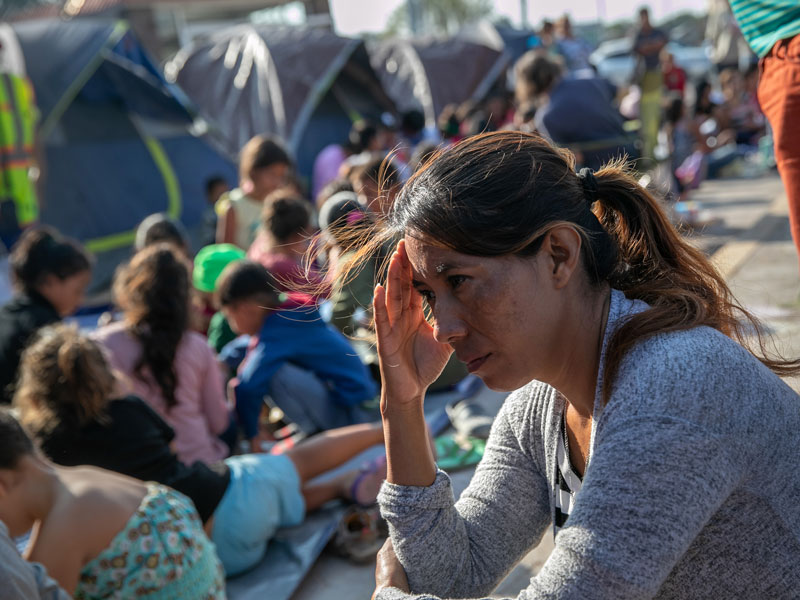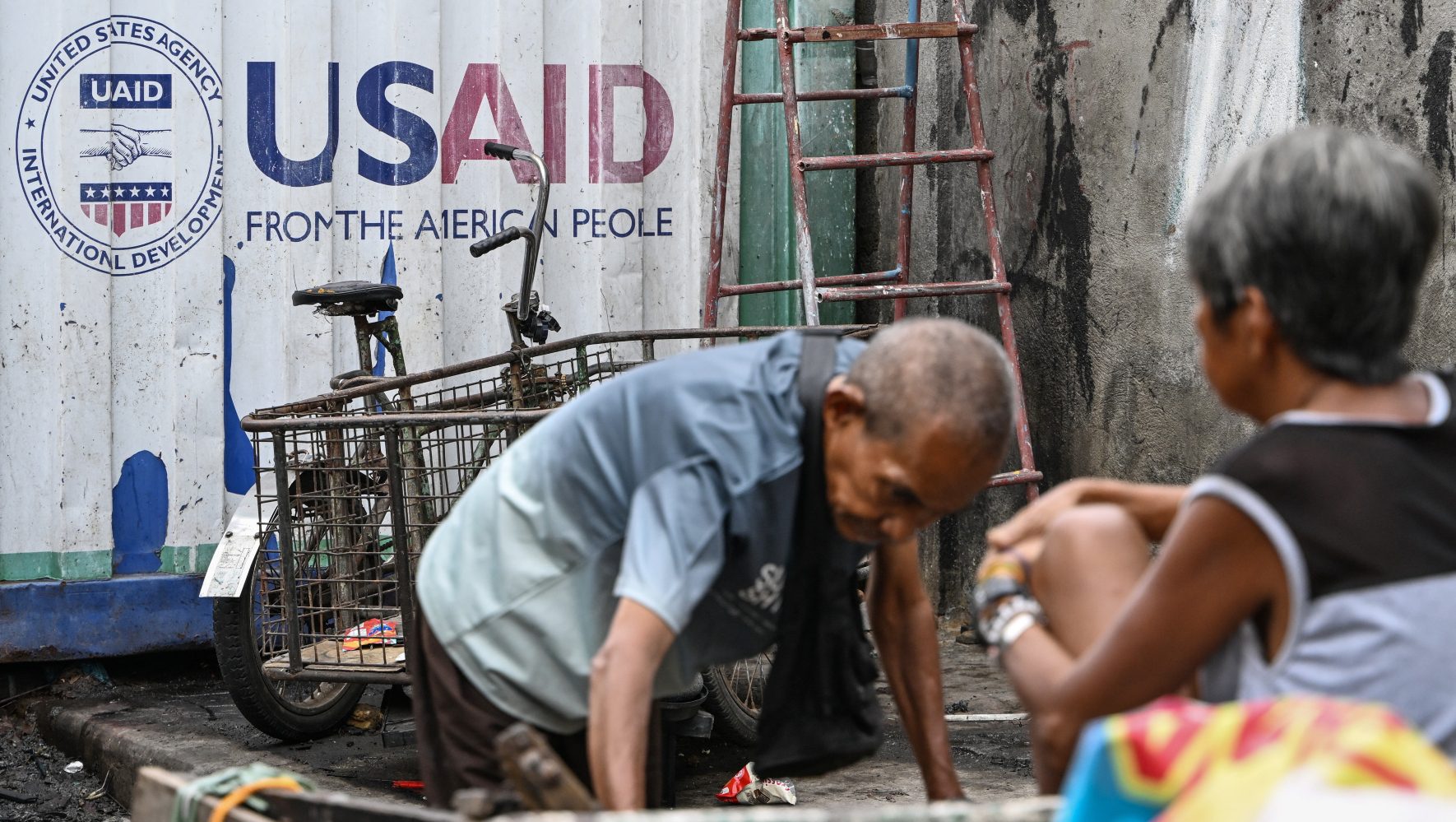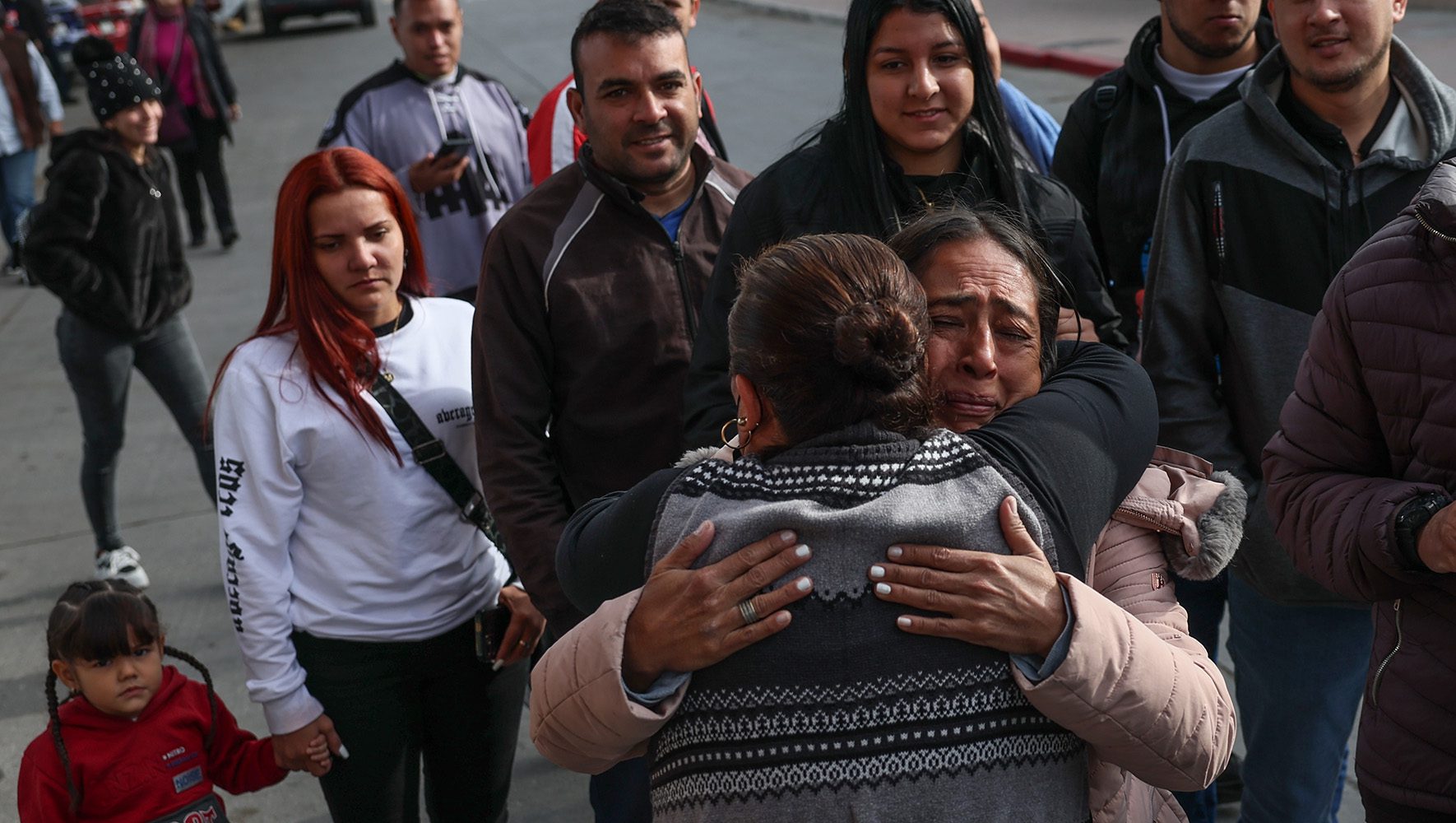Debunking Myths About Refugees
Jun 19, 2020

Story by Kaz Weida originally published on June 18 by Rosetta Stone. Reproduced with permission.
In honor of Refugee Week and World Refugee Day, we thought we’d reach out to two of our partners in the refugee community to learn more about the reality today’s refugees face. While the theme of Refugee Week 2020 is to “imagine” and encourages us all to dream of new possibilities amidst the pandemic, our imaginations can also be a powerful tool to help us empathize with the more than 79.5 million people around the world who have been displaced.
Even after fleeing their home country due to persecution, refugees often face continued discrimination due to assumptions and misconceptions about the refugee community. To dispel and debunk myths about refugees, we spoke with Alicia Wrenn, senior director of resettlement and integration for Hebrew Immigrant Aid Society (HIAS). HIAS has been resettling refugees since the 1880s and is the longest-running resettlement agency in the world. She’s joined by Sunil Varghese, the policy director for the International Refugee Assistance Project (IRAP), an organization that provides legal aid and legal advocacy to displaced peoples around the world.
First off let’s make sure we’re both on the same page because there is some confusion that happens when folks use the term immigrant and refugee interchangeably. What is a refugee?
Wrenn: “So the term immigrants is sort of the big category where it’s anybody who has gone to a foreign country to live. But there’s a subcategory in that of people who are forced to go to another country and that’s refugees. They have fled their home countries because of persecution. And it’s persecution based on one of five or multiple reasons. It’s the fear of being persecuted for race, religion, nationality, membership in a particular social group, or having a particular political opinion. They have fled to another country and they are in fear for their life in returning to the original country.
It’s a legal definition that came out of the Refugee Convention of 1951 after the events of World War II when the international community came together and wanted not to repeat that and so actually created a definition of refugees. So very unlike economic migrants who are making the choice to go to another country for better prospects for work. Refugees are really a different category of people and have sought protection.”
Varghese: “In the US sometimes we hear the term asylum and refugee. Asylum is a process when someone inside the US says they can’t go back to their home country because if they go back they will be persecuted or they were persecuted. So they tell the government they meet the legal definition of a refugee but they’re already in the US.
There is this perception that most refugees live in camps that perpetuate squalor and violence and are a burden on their host states. Is that portrayal we often find in media accounts accurate?
Wrenn: “Well, I think that’s a complicated question. Camps really only host 15 to 20 percent of refugees. Up to 60% of refugees live in urban areas. It’s also hard to generalize about camps. They can look very different from place to place and condition to condition… Refugee resettlement camps are meant to be temporary. However, the stay can be very long. It can be an average of 17 years so there can be a whole generation that grows up in a camp. Camps are meant to serve a purpose in many ways —such as safety and security, first and foremost. And they make the work of providing services for refugees easier like distributing food and protecting vulnerable refugees. However, because refugees tend to stay longer and longer with fewer durable solutions, these camps that are meant to be temporary structures are no longer temporary. People are staying in these camps for far too long. And the ones who aren’t in camps are also often in countries that are neighboring their countries of origin—often not wealthy countries—so there’s too great a burden where there shouldn’t be.”
Varghese: “No, I wouldn’t say that is an accurate characterization. First, let’s look at what a refugee camp is. It can take a lot of different shapes but basically a refugee camp is just a temporary facility or shelter to provide immediate protection and help to people who have been forced to flee. So you’re running for your life, you cross the border, and there’s a temporary shelter or facility that can protect you kind of immediately. These are generally not permanent. They often have services that address the immediate needs of someone that is fleeing. Medical assistance, food, sanitation, shelter, perhaps legal aid. At the end of the day, that’s not a permanent sustainable way of living…
I guess in one way the characterization that they are full of despair isn’t exactly fair. They are places people run to. For example, if my house is on fire and I run out of my house, and there’s a tent where I can kind of hose down and get some smoke inhalation treatment across the street, that’s where I go temporarily. It might not have the same features of a permanent home. But secondly, to speak to your point, refugee camps are not where most refugees are. Today most refugees or displaced people live in towns and cities, not camps. The image that comes to mind when you think of rows of tents? That’s not the reality for most refugees today.”
Let’s go back to this idea that refugees are a burden. When admitting refugees into the country is discussed, it’s often framed as a drain on resources or the economy. Does research support that assertion?
Wrenn: “No. Absolutely not. It’s just not a true narrative. So there have been a couple of studies in the US, as of probably the last year because when the new administration came in they started suggesting this. So researchers actually started to look at the data of what the net effect is of refugees. And there is truth to the fact that refugees when they initially arrive draw on public benefits which they are able to do. The US refugee admissions program actually only provides $1,175 per client. That’s it. That’s all they get.
So you have to imagine that’s impossible to start a life on. So they have to draw on SNAP and other benefits to make it work. But over time they go to work and this research shows a net benefit. That what they put in in taxes and what they buy as consumers at all these locations across the US is in fact a net benefit to the US economy. But I would also say there is a whole social fabric side to it of what they’re contributing just by their diversity and their resilience to have made it here.”
Varghese: “No. Not at all. I think the research that’s been done in this area shows that refugees contribute more than they cost. There was a report in 2017 from the Department of Health and Human Services that from 2005 to 2014 refugees contributed 63 billion more tax revenue than they cost in public benefits, which is more than US-born citizens contributed. I think that you see this in other contexts and other studies in research on refugees in Germany.”
Many assume that refugees are inundating places like the US and Europe because that’s what we hear most often in the news. What’s the reality?
Varghese: “Not at all. Not with the current refugee numbers, the United States is not at all the global leader in refugee resettlement. I guess one way to look at it is looking at the portion of refugees related to the general population or the density of refugees. If you look at the top ten countries you will not find the United States and you will only find three European countries. Instead the countries that kind of shoulder the highest or the most burden are countries who are geographically close to refugee-producing crises. For example, Lebanon has 164 refugees for every 1,000 inhabitants. Jordan is second at 71 refugees per 1,000 inhabitants. So you have places that are close to where refugees are coming from. And then you have places like the United States that at the end of the day there are not many refugees that we take or make it to the United States.”
Wrenn: “The US this year approved a ceiling of 18,000 refugees and we won’t even make that ceiling. If we were to resettle the entire number of refugees, that would be .5% of the US population so less than 1% of the US population would be refugee arrivals this year.
About a year ago I spent the winter in Lebanon where a quarter of its population are refugees. So this tiny little country not very economically well off is hosting that many refugees and we are hosting this tiny, tiny, tiny number.
So I think places like Turkey that host the greatest number of refugees or countries by proximity that are in the pathway of where refugees are going show much greater responsibility than the US. To me, I only see the benefits at these numbers and we could do so much more. We used to do 125,000 regularly and have at times gone up to 200,000 -250,000 in the 70s.”
Refugees can sometimes be portrayed as illiterate or unable to assimilate well into their host countries. Does the history of refugee resettlement support that conclusion?
Wrenn: “First of all, just to establish there isn’t just one refugee type. As you can imagine, the system is responding to conflicts that are occurring all over the world and persecution that’s making people move from point A to point B. That can be very diverse depending on what’s happening in the world. The same refugee pipeline includes a college-educated person who might have some traditional professional work experience that ended up here because of religious persecution. And you will have in the same year a refugee family of ten who spent years in a camp and the parents only have a 6th grade education. And they’re coming experiencing the same things in terms of resettlement.
You’ll have some refugees who can move faster in terms of their integration. And you’ll have others by virtue of what they experienced that need more medical and mental health services. There is trauma and torture that occurs as people are fleeing horrible situations and can’t get out fast enough. There’s an aspect of the resettlement experience, through case management where staff are identifying the people who are going to need long term behavioral and medical health services. The resettlement system is set up to get people on their feet, independent and moving forward.
We are set up to support refugee integration at whatever state they arrive in and whatever their needs are. The incredible thing is there is a huge volunteer network that supports refugee resettlement. It really couldn’t work otherwise. The funds are not great enough for staffing to do it on our own. So you have many many churches and synagogues that support refugee resettlement. You have university students that do rotations in refugee resettlement sites.”
Varghese: “I think if we’re looking at history we can see globally and especially here in the United States we have been greatly shaped by refugees who fled here. From the founding of the country of folks that fled religious persecution to now our culture and our society is shaped from people who resettled here. At the end of the day, persecution and war do not discriminate. Someone regardless of their privileges, their education, their class can become a refugee.
I guess assimilation is a different question. Assimilation, as an idea, is I think something as the United States culture has evolved has been less a point of emphasis as much as integration. Generally, it seems like our society is moving away from this idea that we should all be the same… So I don’t know if we necessarily want or are looking to build a culture where everyone assimilates and becomes a uniform person…
And it seems to be quite successful. If you look at the immigration patterns after World War 2 and the Holocaust. If you look at the integration of Vietnamese refugees and other refugees during the Cold War. If you look at the integration of some of the more recent refugee populations, it seems to be really successful because it’s just been part of the fabric of our country.”
During refugee week, what do you think is the single most important point that you try to educate the public about concerning refugees?
Wrenn: “I would say the expression “but for the grace of God go I” kind of thing. I mean this is our shared humanity with people who not by any choices they’ve made have found themselves in completely dire circumstances. In terms of people deserving a second chance, they’re so resilient already. They’ve made it through this really arduous system and they’re in this new place. If there are any folks who deserve a second chance, I would say it’s refugees.
And I would say it’s an incredibly heartening experience to provide support to newcomers and work with your own community members to introduce others to it, show them where to get to places and find resources. So that’s the other thing I think volunteers really appreciate is just sharing their knowledge whether it’s about their employment path, their community resources like their library or just sharing community pride. It’s a way to really show it off. So I would say it gives you pause to work like this with refugees. I think it’s a meaningful thing to do whether professionally or volunteer-wise.”
Varghese: “I think there is a lot of attention to refugees today as an extraordinary matter. Like it’s something new or it’s something uncommon or it’s something different. And I don’t think it is or has been. I think human existence is part and parcel [of] this idea that people will move their feet, walk across the border, and physically distance themselves away from harm and towards safety.
That’s what a refugee is. It’s someone who is running or fleeing from a dangerous place to a safe place. So it’s not something that is strange or new. It’s why Europeans came to the United States in the first place. Not that they were looking to be refugees like we think about them today but they were looking for a place to exercise their freedoms, looking for a place to be absent of danger. That’s why a lot of people came to the United States. Today I think there seems to be a lot of attention to who are these people and why are they coming here. Maybe it can be perceived as a threat or have all these kinds of negative connotations. There is this cycle of the politicization of the refugee which has led us to maybe think this abnormal.
But I would say it’s not. Now that we have a kind of sophisticated refugee system and framework maybe we’re able to identify who is a refugee, which allows us to identify who is not a refugee a lot easier. We don’t really know why folks came by the millions in the 1920s. These are just kind of natural events for humans and humankind and I would say that a big part of America’s fabric and the American story is to be the place that people run towards. That’s not strange. That’s not extraordinary. That’s part of what America is and we should embrace it. That’s kind of the main takeaway, I would say.
It’s good to celebrate World Refugee Day. Refugees are great. But refugees are not new. They’ve always been here. They will always be here. I think the attention surrounding refugees as an issue makes it seem like it is extraordinary when it is not. It’s just part of our DNA. Part of our American DNA.”



